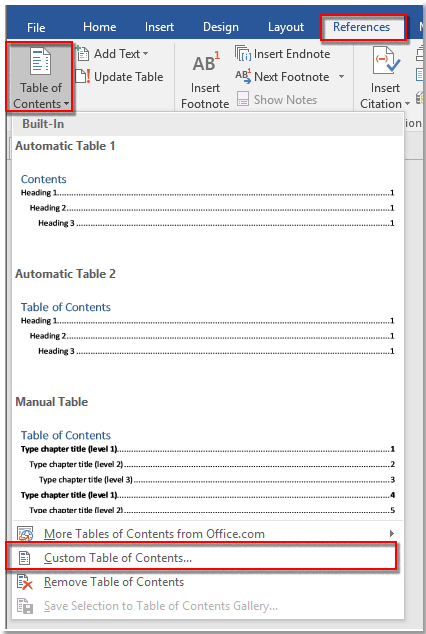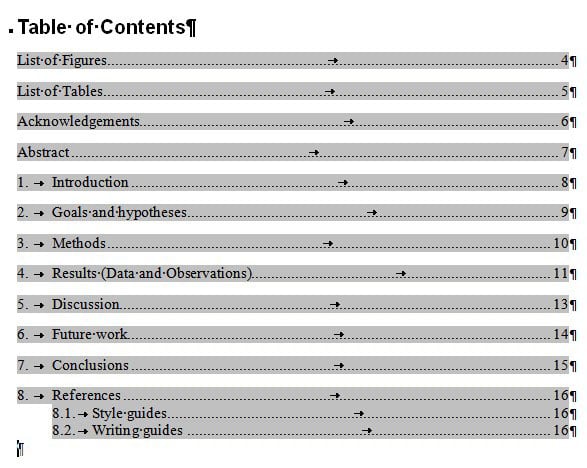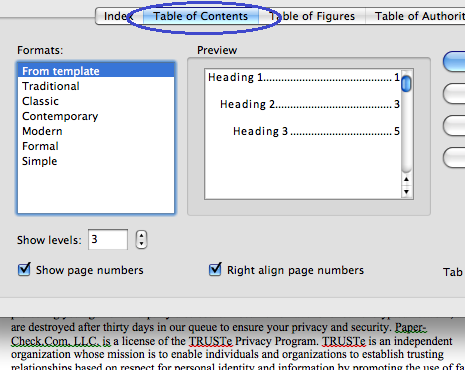

- Add manual table of contents word 2010 how to#
- Add manual table of contents word 2010 update#
- Add manual table of contents word 2010 pro#
You can change the TOC styles after generating the TOC, but when you later regenerate, the TOC will again appear messed up. The result is that your TOC entry shows up as red, 16-point text, even though the TOC 1 style doesn't call for that. When you generate your TOC, the explicit formatting you applied affects what appears in your actual TOC. However, you may have used explicit formatting on a Heading 1 paragraph so that it is red, 16-point type. There is one very, very large caveat to this general statement, however: If you have applied explicit formatting to your headings, then your TOC will not look as you expect it to.įor instance, let's say that you define the TOC 1 style so it is 14-point Arial in black type.

The bottom line is that if you want to change the way your TOC looks, all you need to do is modify the attributes that make up the TOC styles (TOC 1, TOC 2, etc.). Likewise, TOC 2 is used to format a TOC entry generated from a Heading 2 paragraph, and so on. Thus, TOC 1 is used to format the TOC entry generated from a Heading 1 paragraph. There is typically a direct correspondence between the TOC style name and the heading style name. When the TOC is generated, the styles automatically applied to the TOC entries are TOC 1, TOC 2, etc. (You can specify differently named styles to be used when generating the TOC, but that is beyond the scope of this tip.) Exactly how you do this has been covered in other issues of WordTips, but suffice it to say that you can generate a TOC based upon any headings that are formatted using Word's built-in heading styles-Heading 1, Heading 2, etc. Your table of contents should be deleted immediately.Word allows you to quickly and easily create a table of contents, based upon the headings in your document.
Add manual table of contents word 2010 update#
Your table of contents should update immediately. Select Update entire table from the Update Table of Contents dialog box.įigure 15.
Add manual table of contents word 2010 pro#
Pro Tip: You can also select Update Table in the Table of Contents group in the References tab.
Add manual table of contents word 2010 how to#
How to Choose Individual Heading Levels for a Table of Contentsīy default, Word’s tables of contents include text formatted with sequential heading styles (e.g., Heading 1, Heading 2, Heading 3, etc.).



 0 kommentar(er)
0 kommentar(er)
